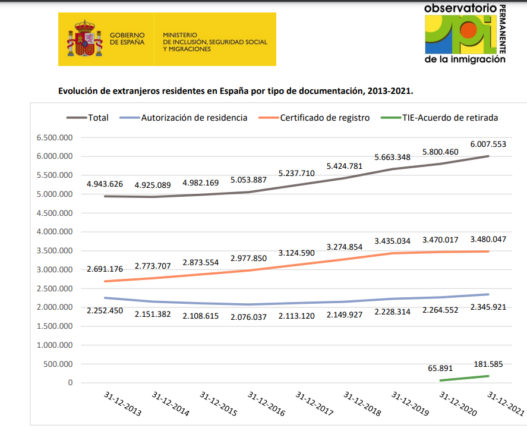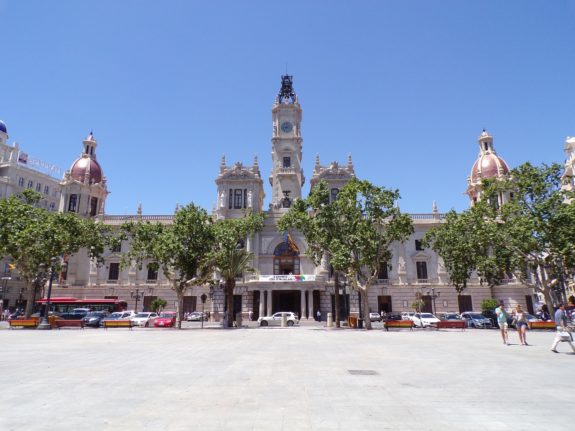Spain has more foreigners living in its territory than ever before.
As of December 31st 2021, a total of 6,007,553 foreigners called Spain home, according to the latest data revealed by the country’s Ministry of Inclusion, Social Services and Migration.
With 207,000 more foreign residents in 2021 than in 2020, Spain is therefore returning to the growth in migration seen prior to the Covid-19 pandemic.
The number of non-EU foreigners who were granted residency in Spain also increased by 3.6 percent in 2021.
Spain’s foreign resident population has risen by 19 percent in the last five years, with roughly one million more foreigners than at the end of 2016.
According to the report, there has been a sharp slowdown in the year-on-year growth of Venezuelan migrants, from a 53 percent increase in 2020 to 7 percent in 2021.
By contrast, migration from Colombia saw the biggest rise in 2021.
The largest migratory increases from within the EU to Spain were from Italy (7 percent) and France (5 percent).
Although provinces such as Madrid (972,000) and Barcelona (895,000) are home to the biggest number of foreigners, in other provinces such as Almería, Málaga, Lleida, Alicante, Girona and the Balearics “extranjeros” represent a bigger proportion of the population.

Of the 6 million foreigners now residing in Spain, 3.48 million are from other EU countries whereas 2.34 million are originally from third countries, with the remaining unaccounted for people mainly Britons who fall under the Withdrawal Agreement (WA).

Spanish immigration authorities compiled the data based on the number of EU residents with green residency documents (certificados de registro) and non-EU residents with the TIE (Tarjeta de Identidad de Extranjero)card or other authorisations such as the WA.
Spain’s biggest foreign population groups according to nationality are currently Romanians (1.09 million), Moroccans (830,000), Britons (407,000), Italians (377,000), Chinese (230,000), Bulgarians (202,000), French (185,000) and Germans (185,000).
The average age of migrants in Spain is 40 and there are slightly more men (52 percent) than women.
In terms of the type of residency documents non-EU immigrants have, 77 percent have long-term authorisations (usually granted after five years of living in Spain) and 23 percent have a temporary residency document.
In terms of how they obtained their residency permits, 33 percent of cases were through work, 22 through family reunification, 12 percent through non-lucrative residence and 33 percent through humanitarian causes and lineage.
The data does not include the 25,000 Ukrainian refugees who have arrived in Spain since the war broke out in February 2022 and have obtained or are awaiting residency. Prior to this, there were 94,000 Ukrainian nationals residing in Spain.



 Please whitelist us to continue reading.
Please whitelist us to continue reading.
Member comments